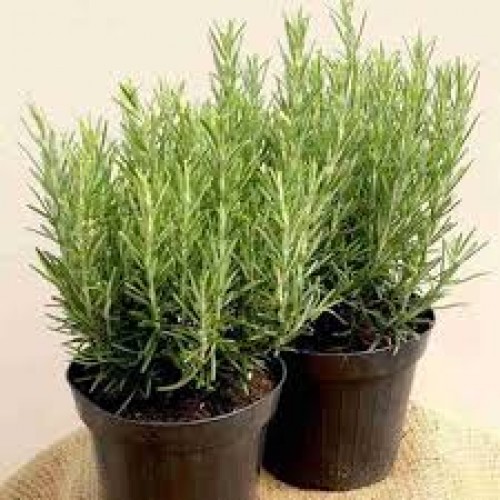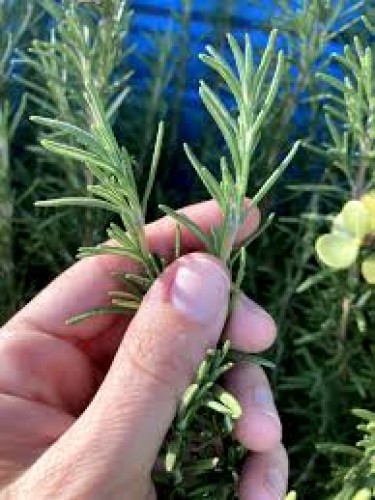off
-
Sold
-

-

out
Rosemary Plant: Nature, Care & Advantages
Rosemary (Botanical name: Rosmarinus officinalis) is a fragrant evergreen herb native to the Mediterranean region. Known for its needle-like leaves and distinctive aroma, rosemary is used in cooking, aromatherapy, and has a variety of medicinal benefits. Its hardy nature and striking appearance make it a popular plant in gardens and homes alike.
Nature of the Rosemary Plant
The rosemary plant is an evergreen shrub with woody stems and narrow, needle-like leaves that are typically dark green on top and silvery underneath. It produces small blue, purple, or white flowers in the spring. This plant can grow up to 5 feet in height, and its compact, bushy form makes it ideal for herb gardens and containers. Rosemary thrives in warm climates, and its ability to tolerate dry conditions makes it relatively low-maintenance once established.
Care for the Rosemary Plant
- Climate: Prefers warm, sunny environments. Ideal temperatures range from 15°C to 30°C (59°F to 86°F). It is sensitive to frost and should be protected in colder climates.
- Soil: Requires well-draining, slightly alkaline soil (pH 6-7). Sandy or loamy soil works best for this plant.
- Watering: Rosemary is drought-tolerant but requires regular watering during the growing season. Allow the soil to dry out between waterings to prevent root rot.
- Sunlight: Needs full sunlight to grow well, ideally 6-8 hours of sunlight daily. It can tolerate partial shade but thrives in direct sun.
- Fertilization: Use a balanced, organic fertilizer every 6-8 weeks during the growing season to promote healthy growth.
- Pruning: Regular pruning helps maintain a compact shape and encourages new growth. Remove dead or woody stems and trim back after flowering to maintain the plant's size.
- Propagation: Rosemary can be propagated from cuttings, seeds, or layering. Cuttings should be taken in late spring or early summer and rooted in well-drained soil.
Advantages of Growing Rosemary
- Culinary Uses: Rosemary is widely used in cooking, especially in Mediterranean cuisine. Its leaves are added to meats, potatoes, soups, and sauces for flavor.
- Medicinal Benefits: Known for its antioxidant, anti-inflammatory, and antimicrobial properties. Rosemary is used to improve digestion, relieve stress, and boost memory and concentration.
- Aromatic Properties: The plant’s leaves release a pleasant fragrance, making it a popular herb for aromatherapy and air freshening.
- Beauty and Hair Care: Rosemary oil is often used in hair care products for its ability to stimulate hair growth, improve scalp health, and prevent dandruff.
- Low Maintenance: Rosemary is a hardy plant that is drought-resistant once established, requiring minimal care compared to other herbs.
- Versatile Plant: It can be grown in pots, containers, or directly in the garden. Its compact form makes it ideal for both small and large spaces.
Conclusion
The rosemary plant is a versatile and low-maintenance herb that offers many benefits, from culinary and medicinal uses to natural beauty care. With its hardy nature and beautiful fragrance, it is a must-have for gardeners and cooks alike. Whether you're looking to add flavor to your meals or boost your health, rosemary is an excellent choice for your home or garden.